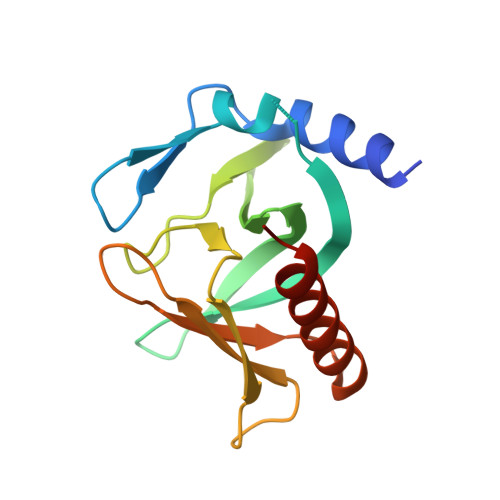Direct regulation of p190RhoGEF by activated Rho and Rac GTPases.
Dada, O., Gutowski, S., Brautigam, C.A., Chen, Z., Sternweis, P.C.(2018) J Struct Biol 202: 13-24
- PubMed: 29196061
- DOI: https://doi.org/10.1016/j.jsb.2017.11.014
- Primary Citation of Related Structures:
6BC0, 6BC1 - PubMed Abstract:
Rho family GTPases regulate a wide range of cellular processes. This includes cellular dynamics where three subfamilies, Rho, Rac, and Cdc42, are known to regulate cell shape and migration though coordinate action. Activation of Rho proteins largely depends on Rho Guanine nucleotide Exchange Factors (RhoGEFs) through a catalytic Dbl homology (DH) domain linked to a pleckstrin homology (PH) domain that subserves various functions. The PH domains from Lbc RhoGEFs, which specifically activate RhoA, have been shown to bind to activated RhoA. Here, p190RhoGEF is shown to also bind Rac1·GTP. Crystal structures reveal that activated Rac1 and RhoA use their effector-binding surfaces to associate with the same hydrophobic surface on the PH domain. Both activated RhoA and Rac1 can stimulate exchange of nucleotide on RhoA by localization of p190RhoGEF to its substrate, RhoA·GDP, in vitro. The binding of activated RhoA provides a mechanism for positive feedback regulation as previously proposed for the family of Lbc RhoGEFs. In contrast, the novel interaction between activated Rac1 and p190RhoGEF reveals a potential mechanism for cross-talk regulation where Rac can directly effect stimulation of RhoA. The greater capacity of Rac1 to stimulate p190RhoGEF among the Lbc RhoGEFs suggests functional specialization.
Organizational Affiliation:
Department of Pharmacology, The University of Texas Southwestern Medical Center, 6001 Forest Park Road, Dallas, TX 75390, USA. Electronic address: gbengadada@outlook.com.

















